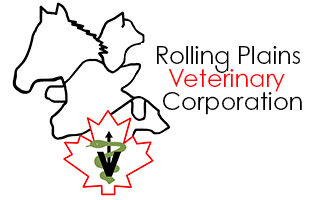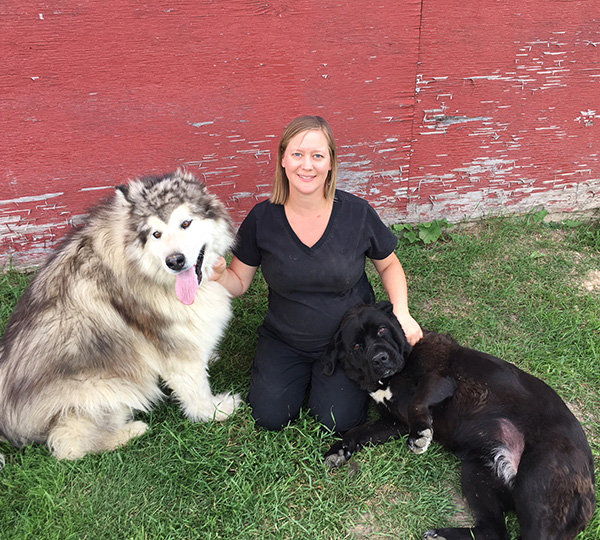Farm Animals vs. Felines and Canines: A Deep Dive into Body Structures
October 29, 2024 2:15 pm Leave your thoughtsEver wonder what makes a horse’s gallop different from a dog’s sprint? Or why a cat can land on its feet, but a goat climbs rocky hills without hesitation? Farm animals and household pets may all belong to the animal kingdom, but when we look closer, we discover a fascinating array of differences in their body structures that allow them to move, behave, and interact with their environments in unique ways.
At St. Claude Veterinary Clinic, we care for a wide range of animals—from cats and dogs to horses, cows, and goats—each with their own special anatomy. And today, we’re diving into what makes farm animals and our beloved felines and canines so unique. So get ready to learn about everything from skeletal structure to those long or stiff hairs on the face or nostrils of an animal that we affectionately call whiskers.
1. Hooves and Paws: What’s Underfoot?
Let’s start with one of the most obvious differences between farm animals and pets: their feet. Whether it’s a horse’s solid hoof or a cat’s soft paw, these structures are perfectly adapted to the lifestyles and environments these animals live in.
Hooves: Built for Durability and Speed
Farm animals like horses, cows, and goats have hooves, which are hard, protective coverings made of keratin. A horse’s hoof, for example, acts like a shock absorber, protecting the legs and joints during movement. In wild or pasture environments, hooves allow these animals to traverse rough, uneven terrain with minimal injury.
- Horses have single, large hooves, which allow them to run at high speeds over long distances. This makes sense when you consider their wild ancestors, who had to outrun predators in open fields. Horse hooves require regular trimming to stay healthy, as they don’t naturally wear down as they would in the wild.
- Cows and goats have cloven hooves, which means their hooves are split into two parts. This structure provides them with extra balance and stability, especially important for goats, which are known for their climbing abilities.
Paws: Flexible and Agile
Dogs and cats, on the other hand, have paws. These soft, flexible structures provide traction, shock absorption, and agility. Paws are padded with fat and tissue, which protects them from rough surfaces and helps them move quietly—perfect for both the hunter (cat) and the helper (dog).
- Dogs have paws designed for endurance. Breeds like huskies and retrievers have thick, tough pads to help them navigate long distances over varied terrain. Their claws, which don’t retract like a cat’s, provide grip when running or turning quickly.
- Cats, known for their stealth, have retractable claws and soft pads that allow them to move silently when stalking prey. Their pads also help with landing gracefully when they jump from high places.
Understanding these structural differences is key when it comes to caring for these animals. For instance, horses and cows need regular hoof care to prevent infections and lameness, while dogs and cats might need extra protection for their paws in extreme weather conditions.
2. Skeletal Structures: Strength vs. Flexibility
The skeleton is the foundation that supports an animal’s body, and it greatly influences how they move, interact with their surroundings, and perform their daily activities. Farm animals and pets have evolved differently based on their needs for strength, speed, and flexibility.
Farm Animals: Built for Strength and Endurance
Farm animals like cows, horses, and pigs are often larger and heavier, and their skeletal structures reflect their need for strength and stability.
- Horses are particularly impressive in their skeletal design. With long legs and a streamlined body, horses are built for running and carrying weight. Their legs have minimal muscle below the knee, relying on tendons and ligaments to move efficiently, which is why they’re able to run long distances without tiring easily.
- Cows are stockier and have a much more robust skeletal system to support their heavy bodies. Cows aren’t built for speed like horses, but their sturdy legs and strong spine are perfect for slow, steady movement. Their bones are dense, supporting the heavy muscles required for their role in dairy or meat production.
- Goats are somewhere in between—agile enough to navigate rocky terrains but strong enough to carry weight when needed. Their skeletal system provides both strength and flexibility, making them excellent climbers.
Felines and Canines: Designed for Agility and Speed
In contrast, the skeletal structure of cats and dogs prioritizes flexibility, agility, and speed. Their bones are lighter, and their joints allow for a wider range of motion.
- Dogs, particularly certain breeds, are designed for bursts of speed and agility. Greyhounds, for example, have long, lean legs with a flexible spine that allows them to stretch out while running, achieving incredible speeds. Their shoulder blades are unattached to the skeleton, giving them greater flexibility in movement.
- Cats are built for climbing, jumping, and landing with precision. Their flexible spine and powerful hind legs allow them to leap great distances or pounce on prey with ease. Cats also have an impressive “righting reflex,” which helps them land on their feet if they fall, thanks to their flexible skeletal structure and balance.
3. Long or Stiff Hairs on the Face or Nostrils of an Animal: More Than Just Whiskers
Have you ever noticed the long or stiff hairs on the face or nostrils of an animal? These hairs, commonly referred to as whiskers, are not just for decoration—they play a crucial role in helping animals navigate their surroundings.
Farm Animals: Specialized Sensors
In farm animals, whiskers and other sensory hairs are incredibly important for helping them explore and feel their environment, especially when grazing or moving through unfamiliar terrain.
- Horses have whiskers around their muzzle, eyes, and even their chin. These whiskers act as sensors, allowing horses to detect objects or food close to their face that they cannot see. It’s important to note that many veterinarians advise against trimming a horse’s whiskers, as they play an essential role in the horse’s sensory perception.
- Cows and goats also have stiff hairs near their noses, which help them feel the grass, plants, or objects they’re interacting with. For animals that rely on their mouths for feeding, these sensory hairs are particularly helpful in determining what’s safe to eat.
Dogs and Cats: Whiskers That Work Overtime
Dogs and cats are perhaps best known for their impressive set of whiskers, and these sensory tools serve multiple purposes beyond just making them look adorable.
- Dogs use their whiskers to sense changes in their environment, especially in low-light conditions. The long or stiff hairs on their muzzle and around their eyes detect vibrations in the air, helping them avoid obstacles or sense when something is close by. This is why dogs are so adept at moving through dark or crowded spaces without bumping into things.
- Cats take whiskers to the next level. Their whiskers are so sensitive that they can detect even the slightest air currents, helping them determine whether they can fit through tight spaces or detect prey nearby. Each whisker is connected to a nerve that sends sensory information directly to the brain, making whiskers an integral part of a cat’s navigation and hunting abilities.
4. Digestive Systems: Grass Munchers vs. Carnivores
The way animals process food is another fascinating difference between farm animals and pets. Their digestive systems are specially adapted to their diets, which can vary widely between herbivores and carnivores.
Farm Animals: Complex Digestive Systems
Most farm animals, such as cows, sheep, and goats, are herbivores, meaning their digestive systems are designed to break down fibrous plant materials.
- Cows are ruminants, which means they have a specialized stomach with four compartments that allow them to digest tough plant material like grass. This complex system enables them to extract the maximum amount of nutrients from their food through a process that involves fermentation, regurgitation, and re-chewing (also known as “chewing cud”).
- Goats, like cows, are ruminants and have a similar multi-chambered stomach that allows them to digest a wide variety of plants, including those that might seem unappetizing to other animals.
Dogs and Cats: Carnivores with Simple Stomachs
Dogs and cats, on the other hand, are carnivores (with dogs being more omnivorous). Their digestive systems are much simpler and shorter, as animal proteins are easier to break down than fibrous plant matter.
- Dogs have a relatively short digestive tract that efficiently processes meat, but they can also digest some plant materials, making them true omnivores. That’s why dog food often includes grains and vegetables in addition to meat.
- Cats are obligate carnivores, meaning they require a diet primarily made up of animal proteins. Their digestive systems are designed to quickly break down meat, and they have little need for plant-based nutrients.
St. Claude Veterinary Clinic: Your Partners in Animal Care
At St. Claude Veterinary Clinic, we take pride in caring for animals of all kinds, from beloved household pets like cats and dogs to hardworking farm animals like horses and cows, and understanding the unique body structures and needs of these animals helps us provide the best possible care. So whether it’s a routine check-up for your dog or specialized hoof care for your horse, we’re here to ensure every animal gets the expert attention they deserve.
From paws to hooves, whiskers to horns, we’ve got your animal care needs covered. Just reach out to St. Claude Veterinary Clinic for compassionate, comprehensive veterinary care for all the animals in your life!
Categorised in: How to Become Great Pet Owners
This post was written by Dr. Marc Phillipot

